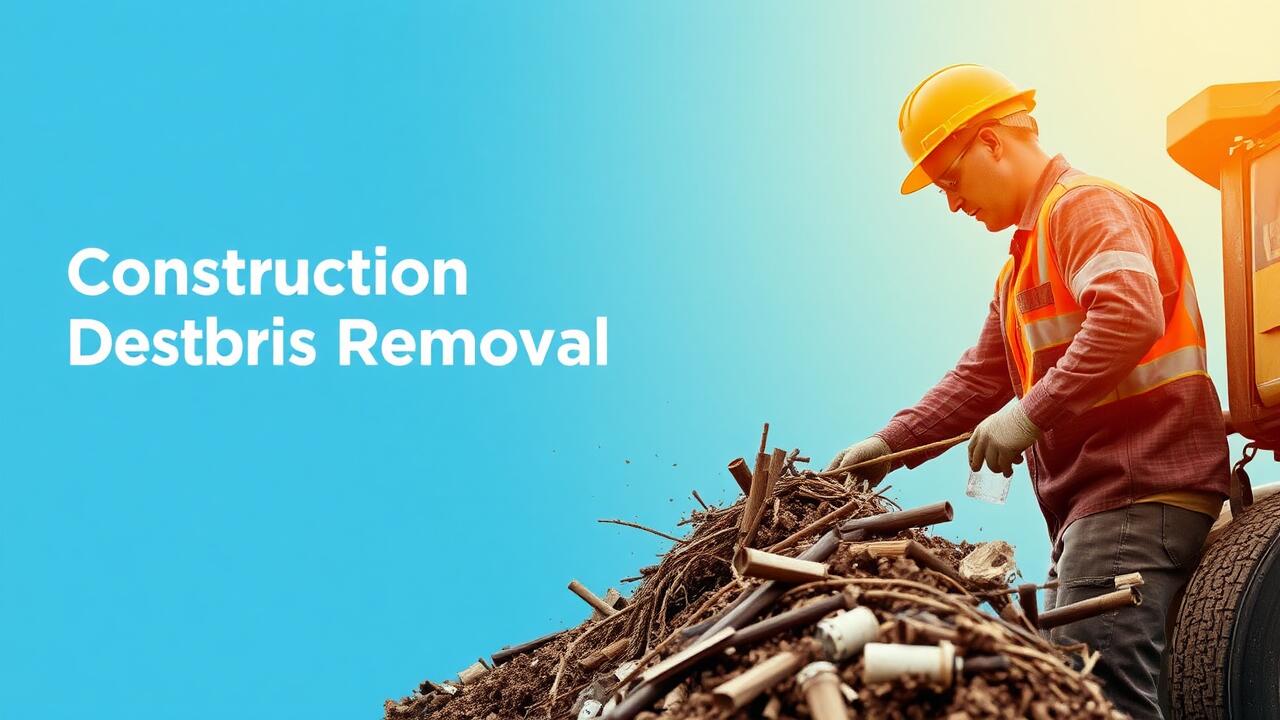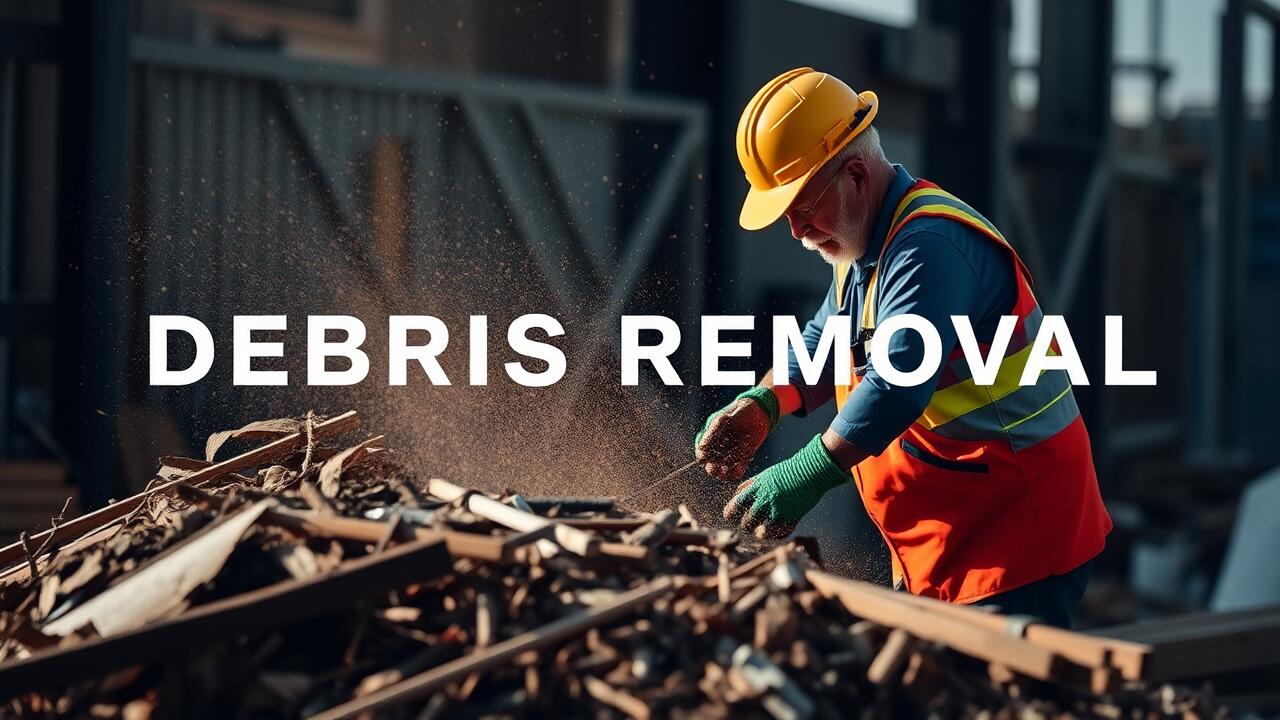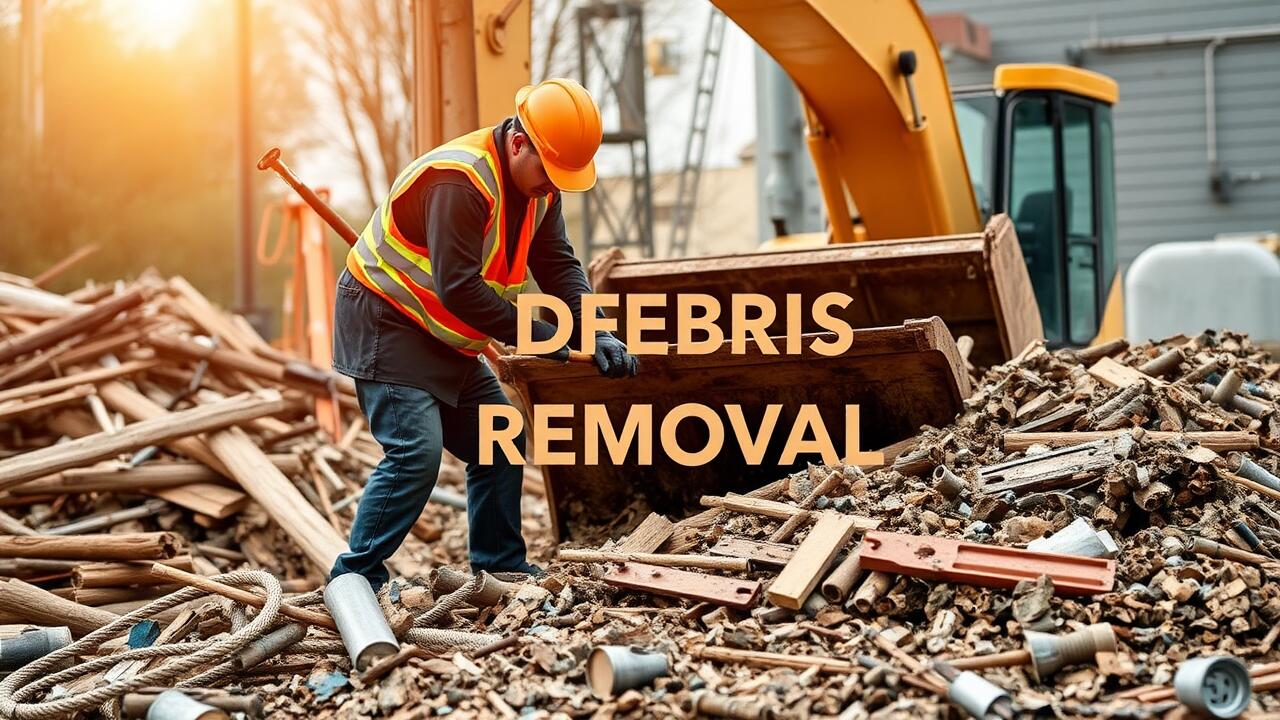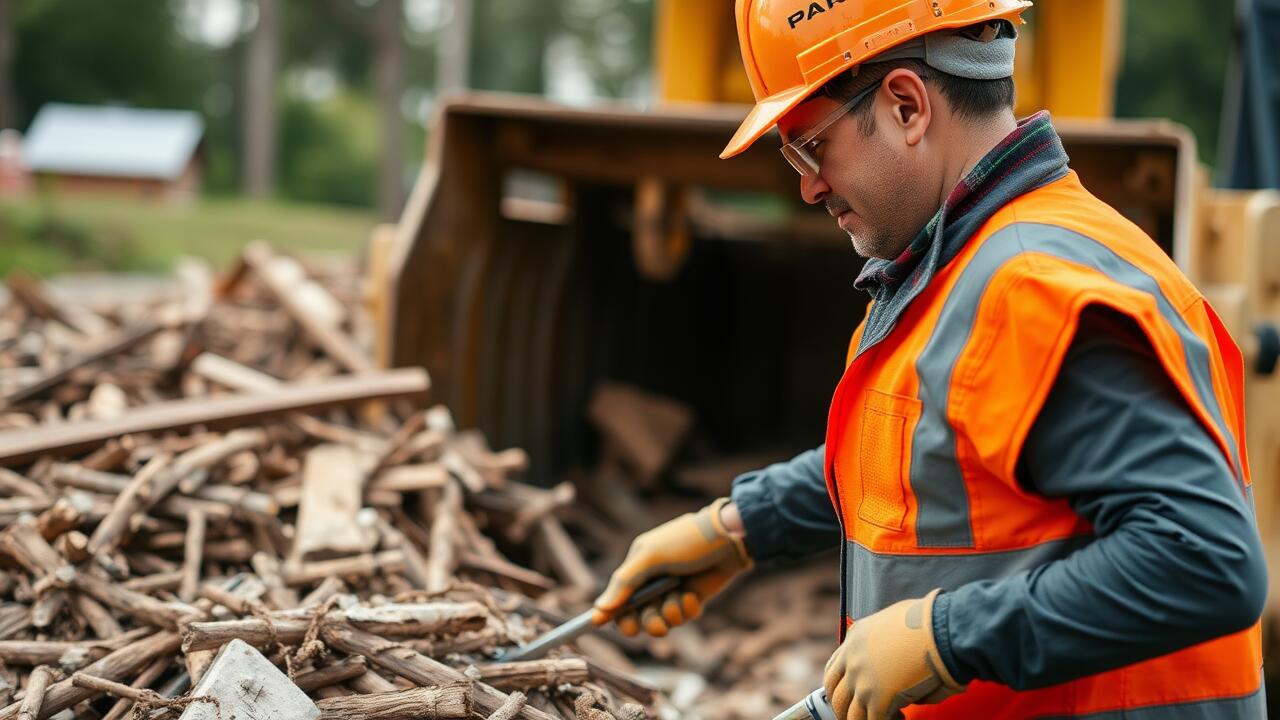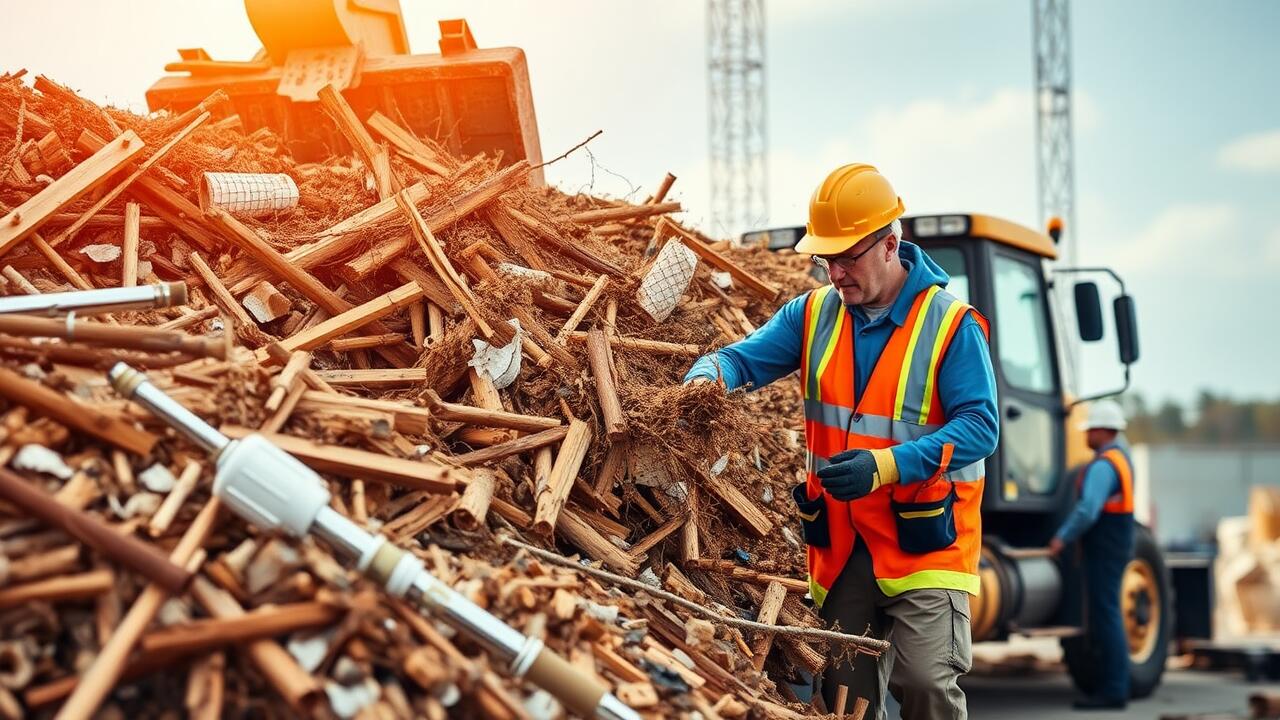
Best Practices for Metal Debris Management
Efficient management of metal debris in construction projects is crucial for environmental sustainability and project efficiency. Implementing a comprehensive debris management plan ensures proper sorting and categorization of materials. Designating specific areas for metal debris collection can streamline the process. Additionally, training construction crews on the importance of recycling metal waste enhances participation and compliance. Regular audits of waste streams allow for adjustments and improvements to waste management strategies.
In urban areas like Phoenix, construction debris removal services must adapt to the challenges of high-density projects. Collaborating with local recycling facilities can optimize the recovery of valuable metals. Utilizing advanced sorting technology improves the quality and quantity of recyclables obtained from construction sites. Engaging with experienced debris removal companies not only facilitates efficiency but also reinforces best practices in handling metal waste responsibly.
Strategies for Effective Waste Reduction
Effective waste reduction in construction projects often begins with a comprehensive planning phase. This involves assessing the types and quantities of materials that will be used and identifying potential areas where waste may occur. By implementing a just-in-time delivery system, builders can reduce excess materials that could otherwise end up as debris. Regular training sessions for workers can also familiarize everyone with best practices, ensuring they understand the importance of minimizing waste at every stage of the project. Incorporating a recycling program specifically tailored to the materials used on-site can further bolster these efforts.
Utilizing services like Construction Debris Removal Phoenix can significantly enhance waste management strategies. These specialized companies offer efficient solutions for collecting and sorting metal debris, ensuring recyclable materials are processed appropriately. Collaborating with such services maximizes recycling opportunities while minimizing the burden on construction teams. Moreover, establishing partnerships with local recycling centers can streamline the disposal process and promote sustainability within the industry. Promoting a culture of waste reduction not only reflects responsible practices but also aligns with growing environmental standards.
The Role of Technology in Metal Recycling
Technology plays a crucial role in enhancing metal recycling processes. Advanced sorting techniques, such as automated magnet systems and optical sensors, streamline the identification and separation of various metal types from construction debris. These innovations ensure that more materials are efficiently recovered, reducing waste and maximizing resource utilization. Furthermore, the integration of data analytics allows recycling facilities to track metal recovery rates and optimize their operations for better performance.
In urban areas like Phoenix, the implementation of cutting-edge recycling technologies significantly impacts construction debris removal. Companies focusing on Construction Debris Removal Phoenix are increasingly adopting innovative solutions to boost their efficiency. These technologies not only improve the quality of recycled materials but also contribute to sustainable practices within the local construction industry. By embracing these advancements, businesses can reduce their environmental footprint while promoting a circular economy in metal usage.
Innovations Transforming the Industry
Advancements in technology have significantly impacted the metal recycling industry, particularly through automation and data analytics. Automated sorting systems equipped with artificial intelligence enable more efficient separation of metal types from construction debris. This process minimizes contamination and maximizes the quality of recycled materials. In areas like Construction Debris Removal Phoenix, these technologies streamline efforts to recover valuable metals while reducing the environmental footprint of construction projects.
Furthermore, mobile apps and platforms have emerged to connect construction sites with recycling facilities. These digital solutions facilitate real-time tracking of metal debris, improving logistics and resource management. Construction professionals can effectively plan for material collection and ensure compliance with local regulations. The integration of such innovations enhances overall efficiency and supports sustainable practices in metal waste management, aligning with the growing demand for eco-friendly solutions in the construction sector.
Case Studies of Successful Metal Debris Projects
Several construction projects have effectively managed metal debris, showcasing innovative strategies that can serve as models for future endeavors. One notable example is the renovation of a historic building in downtown Phoenix, where a systematic approach to metal debris management was implemented. The project team collaborated with local recycling firms to ensure that as much of the metal waste generated on-site was diverted from landfills. This included meticulous sorting of ferrous and non-ferrous metals, allowing for maximum recyclability. Construction Debris Removal Phoenix played a vital role in the logistics, facilitating timely pick-up and processing of materials.
Another successful case involved a large infrastructure project where metal recycling and debris management were prioritized from the outset. By integrating advanced technologies for tracking and sorting materials, the team achieved a diversion rate of over 80%. This project not only reduced environmental impact but also resulted in significant cost savings for stakeholders. Employing a comprehensive strategy that included training workers on best practices and fostering partnerships with recycling facilities proved essential. These examples highlight the positive outcomes of effective metal debris management in construction, demonstrating that strategic planning can lead to both ecological and economic benefits.
Lessons Learned from Notable Examples
Successful metal debris projects provide valuable insights into effective practices for debris management. One notable example involved a large-scale construction site that implemented a systematic approach to recycling steel waste. By establishing designated collection points and working with local recycling firms, the project reduced metal waste significantly while also promoting collaboration among contractors and recycling specialists. Construction Debris Removal Phoenix played a crucial role in this initiative, showcasing how local businesses can enhance community efforts in sustainable practices.
Another example is a mid-sized construction project that used innovative sorting technology to streamline the recycling process. This approach not only maximized metal recovery but also minimized contamination with other waste materials. The use of advanced separation techniques resulted in a notable improvement in recycling rates and reduced disposal costs. These inspiring case studies underline the importance of integrating strategic planning and local resources, demonstrating that effective management of metal debris can lead to more sustainable construction practices.
FAQS
What is metal debris in construction?
Metal debris in construction refers to scrap metal and unwanted metal materials generated during construction, demolition, or renovation projects, including items like rebar, steel beams, and metal fittings.
Why is recycling metal debris important?
Recycling metal debris is important because it reduces landfill waste, conserves natural resources, minimizes environmental impact, and can lead to cost savings for construction projects through the reuse of materials.
What are some best practices for managing metal debris?
Best practices for managing metal debris include sorting materials at the source, implementing waste reduction strategies, utilizing recycling programs, and ensuring proper storage and transportation of recyclable metals.
How can technology improve metal recycling in construction?
Technology can improve metal recycling through innovations such as advanced sorting systems, automated processing equipment, and tracking software that streamline the recycling process and enhance efficiency.
What are some notable case studies in metal debris recycling?
Notable case studies include large-scale projects that successfully implemented comprehensive recycling plans, showcasing effective strategies, measurable results, and important lessons learned that can be applied to future construction endeavors.

